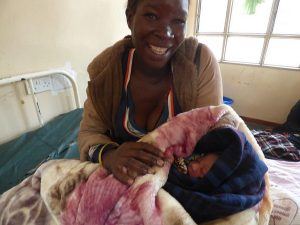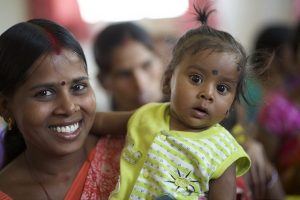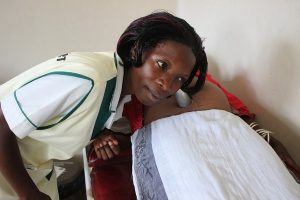
The government of Malawi recently hosted national and global health leaders in its capital, Lilongwe, to launch the Network for Improving the Quality of Care for Maternal, Newborn and Child Health (the Network). The vision is an ambitious one — to halve the number of maternal and newborn deaths and stillbirths in participating health facilities within five years in nine initial countries. The Network aims to build on and accelerate progress and to do business as unusual.
The focus on quality, equity and dignity is essential if we are to achieve the Sustainable Development Goal (SDG) targets for maternal mortality reduction — as is country ownership and leadership. To put a finer point on it, the SDG target for maternal mortality must be set in each country, contributing toward achieving the global average. As stated in a newly published Lancet commentary, “Understanding the distinction between the global and national targets is crucial. The global target alone is not useful for instituting country-level change. Countries need to set national targets to achieve two-thirds reduction in maternal deaths and thus contribute to meeting the global goal.”

The fact is that no country has likely yet reached the national target of at least two-thirds reduction that would be its contribution to the global average maternal mortality ratio of less than 70 maternal deaths per 100,000 live births. Each year, an estimated 5.6 million women and babies die due to complications in pregnancy, childbirth and in the first month of life. This includes 303,000 maternal deaths, 2.7 million newborn deaths and 2.6 million stillbirths.
Along with colleagues from around the world, I am excited to be a part of the Quality, Equity and Dignity effort, and I’m inspired by the leadership from governments and partners from Bangladesh, Cote d’Ivoire, Ethiopia, Ghana, India, Malawi, Nigeria, Tanzania and Uganda. Along with global partners, all have recognized that quality of care is as important as access to care. The question then becomes what does quality care look like? White Ribbon Alliance and colleagues from FCI/MSH, Save the Children and PMNCH have come together under the frame of Quality, Equity and Dignity (QED) to understand this firsthand, from the women whom global and national efforts aim to help.
As seen in this newly released video, the message is quite clear. Women want to be treated with dignity and respect and have equal access to high quality care no matter their religion, economic status or race. They want to give birth in a clean, safe environment with trained health workers who are supported to provide effective care.
We must provide meaningful opportunities for women and health workers to be heard. But more importantly, we must truly listen to them and support their solutions to the challenges they face.
For example, we know that midwives are capable of providing 87% of maternal and newborn care needed. Yet, midwives have told us that they are chronically understaffed and underpaid, forced to work in poor conditions and disrespected, leading to poor quality care for women and babies. National and global efforts must reflect solutions that support midwives and mothers, so that midwives can provide and women can receive the respectful maternity care they deserve. Solutions must reflect the global standards around the quality of care for mothers and newborns in ways that make sense to the women, babies and health workers they are meant to support.
In partnership with communities, clinical experts, local organizations, health care professionals, development partners and political leaders, we can transform the health system so that every woman, and every newborn, is treated with quality, equity and dignity, so that mothers and babies everywhere can survive the most vulnerable time in their lives and thrive for their betterment and the betterment of society.
This post originally appeared on Medium.
—
Learn more about the global and national maternal mortality targets for the SDGs.
Read key findings from the 2016 Midwives’ Voices, Midwives’ Realities report.

